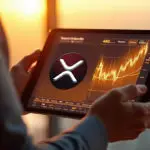What Is a Profit and Loss (P&L) Statement?
Definition and Instances of a P&L Proclamation
How a Benefit and Misfortune Proclamation Functions
Other Budget reports
An entrepreneur decides benefit versus misfortune
Photograph: fizkes/Getty Pictures
Definition
A benefit and misfortune (P&L) explanation is a synopsis of an association’s pay and costs throughout some undefined time frame.
Key Focal points
A P&L explanation clarifies the pay and costs that lead for an organization’s benefits (or misfortunes).
The archive continues from top-line income to the main concern.
Surveying changes in P&L explanations over different periods is great.
Extra budget reports can enhance the data in a P&L explanation.
Definition and Instances of a Benefit and Misfortune Proclamation
A P&L explanation, otherwise called an “pay proclamation,” is a budget summary that subtleties pay and costs over a particular period. This report assists you with understanding what’s behind an organization’s benefit by classifying incomes and costs. For instance, you can check whether a business spends more than it procures on creation, and you can see working benefits independently from supporting expenses and duties.
Test P&L Proclamation Q3 20XX
Absolute Revenue $500,000
Cost of Products Sold $100,000
Net Profit $400,000
Selling and Working Expenses $50,000
General and Administrator Expenses $30,000
All out Working Expenses $80,000
Working Income $320,000
Interest Expenses $25,000
Pay Before Taxes $295,000
Personal Assessment Expense $103,250
Net Income $191,750
How a Benefit and Misfortune Explanation Functions
As you travel through pay and costs bit by bit, the story behind benefit (or misfortunes) unfurls. The pay proclamation begins with income and continues on toward costs that in the end bring about the association’s benefit or misfortune.
Note
Some P&L explanations incorporate an organization’s income for every offer (EPS).
Assuming that any parts or materials are required, those costs regularly go under cost of products sold (Pinions). The outcome is net benefit. Then, the proclamation deducts any costs important to maintain the business, for example, finance, utilities, support costs, and different costs. The outcome is working benefit. At this stage, you can perceive how powerful the organization is at giving labor and products at a benefit.
As well as understanding the capacity to work at a benefit, it’s significant to understand what the reality is after all expenses and interest costs. On the off chance that an association acquires cash, inordinate premium expenses can crash any benefits. By looking at interest costs, you can assess on the off chance that organizations are utilizing obligation carefully. Furthermore, charges are a reality for some organizations, so you really want to realize how much after-charge benefit stays subsequent to paying every essential expense.
Subsequent to deducting all that — including input costs, working costs, supporting expenses, and duties — you show up at the net gain.
Breaking down Benefit and Misfortune Explanations After some time
A P&L proclamation is a depiction of one period’s monetary outcomes. However, that data probably won’t be valuable except if you figure out the master plan. By inspecting how the P&L proclamation changes over the long run, you might have the option to recognize patterns. For instance, assuming Machine gear-pieces increments emphatically, that might demonstrate less benefit ahead (or simply an impermanent spike in input costs). Hence, seeing each P&L articulation as one piece of the puzzle is fundamental.
Other Fiscal reports
A P&L explanation gives important data about pay and costs. Be that as it may, for a total perspective on an association’s monetary wellbeing, it’s wise to survey other budget reports, too.
Note
With any budget summary, it’s fundamental to investigate how these reports change after some time. It might likewise be useful to look at proclamations from contenders and others in comparative businesses.
The assets, liabilities, and equity of a company are all displayed on a balance sheet. Resources, which show up on the left half of the asset report, are things the organization can sell or use to create income. Liabilities, on the right side, address installments or commitments that might diminish benefits. At long last, value is the worth of the organization assuming that you fulfill liabilities and have remaining resources.
Income Articulation
Income articulations detail changes in real money levels. Since liquidity means a lot to keep organizations above water, the capacity to oversee cash is basic. Confounding the income proclamation with a pay statement is simple. Be that as it may, the P&L proclamation subtleties the monetary idea of benefits, which probably won’t affect income in the ways you anticipate. For instance, deterioration may be an “cost” on the P&L explanation, yet it’s a bookkeeping idea — not an income. The income proclamation centers around genuine installments and receipts.










 Bitcoin
Bitcoin  Ethereum
Ethereum  Tether
Tether  XRP
XRP  Solana
Solana  USDC
USDC  TRON
TRON  Dogecoin
Dogecoin  Lido Staked Ether
Lido Staked Ether